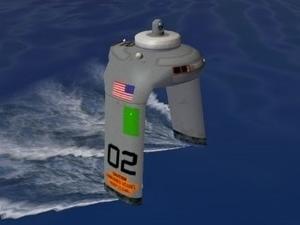In the trenchesUnmanned sub-tracker to address a silent threat
The growing number of adversaries able to build and operate quiet diesel electric submarines is a national security threat that affects U.S. and friendly naval operations around the world; DARPA autonomous surface vessel will track and follow enemy subs for months

Concept rendering of ACTUV in surface view // Source: neoteo.com
The growing number of adversaries able to build and operate quiet diesel electric submarines is a national security threat that affects U.S. and friendly naval operations around the world. To address this emerging threat, DARPA says it recently awarded a contract for Phases 2-4 of its Anti-Submarine Warfare (ASW) Continuous Trail Unmanned Vessel (ACTUV) program to Science Applications International Corporation, McLean, Virginia.
During Phases 2-4 the ACTUV program will attempt to design, construct, and demonstrate an unmanned vessel that tracks quiet diesel electric submarines for months at a time spanning thousands of kilometers of ocean with minimal human input.
“Key features and technology for the vessel include advanced software, robust autonomy for safe operations in accordance with maritime laws, and innovative sensors to continuously track the quietest of submarine targets,” said Scott Littlefield, DARPA program manager.
If successful, ACTUV would create a technological strategic advantage against the burgeoning quiet submarine threat and reduce manpower and other costs associated with current ASW trail operations.
“Our goal is to transition an operational game-changer to the Navy,” said Littlefield. “This should create an asymmetry to our advantage, negating a challenging submarine threat at one-tenth their cost of building subs. The program also establishes foundational technologies for future unmanned naval systems.”
During Phase 1 the program refined and validated the system concept, completing risk reduction testing associated with submarine tracking sensors and maritime autonomy. Operational prototype at-sea testing is expected in mid-2015.
